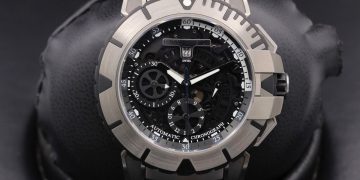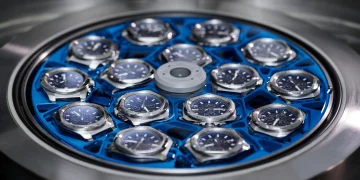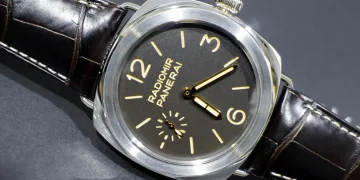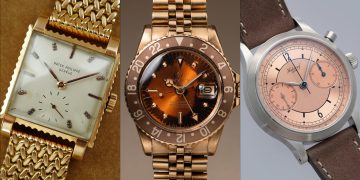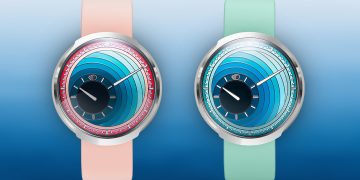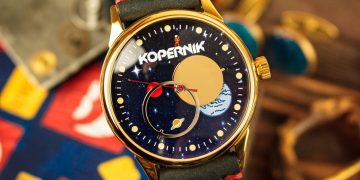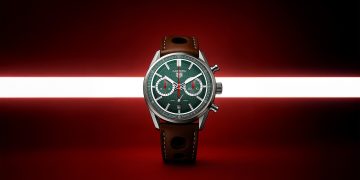Introduction:
The watchmaking industry, with its deep roots in centuries-old craftsmanship, has always been a delicate balance between heritage and innovation. From the pioneering works of early horologists to the development of highly complex mechanical movements, watchmaking has been a craft that celebrates both the artistry of tradition and the pursuit of technological advancement. However, as modern watchmaking evolves, there is a growing question: Can contemporary watchmaking techniques uphold the legacy of historical craftsmanship while embracing the innovation of the future?
In this article, we will explore how modern watchmaking techniques are addressing this balance between the rich history of horology and the cutting-edge innovations that have transformed the industry in recent decades. Is it possible for a watch to be both an heirloom, steeped in tradition, and a symbol of progress, using the most advanced technologies? Or is there an inherent conflict between the two? Let’s explore this complex dynamic in greater detail.
1. The Heritage of Watchmaking: A Tradition of Excellence
1.1 The Importance of Tradition in Watchmaking
Historically, watchmaking has been an artisanal craft, one that has been passed down through generations, often from master to apprentice. Swiss watchmaking, in particular, has become synonymous with high-quality craftsmanship, precision, and elegance. Timepieces were meticulously created by hand, with each component being individually crafted, assembled, and tested. This attention to detail and focus on quality was central to the appeal of luxury watches.
The appeal of traditional watchmaking lies in its deep connection to heritage. Owning a classic timepiece is about more than just telling time; it’s about possessing a piece of history. Watches like the Rolex Submariner, Omega Speedmaster, or Patek Philippe Calatrava represent more than just mechanical devices; they are symbols of craftsmanship, timeless style, and luxury.
The history of watchmaking is built on these foundational principles—precision, craftsmanship, and timeless design. Many collectors, enthusiasts, and brands hold these traditions as sacred, insisting that the future of watchmaking must honor the past and maintain these core values. As a result, even in today’s world, many high-end watches continue to be produced with the same methods and techniques used hundreds of years ago, albeit with the help of modern tools.
1.2 The Craftsmanship Behind Classic Watches
The process of creating a mechanical watch is incredibly labor-intensive, with each component requiring a high level of skill and precision. Watchmakers still use tools like lathes, grinders, and manual techniques to shape and polish tiny gears and springs, ensuring that everything fits together perfectly. The mechanical movement is at the heart of this process, as it not only powers the watch but also showcases the technical prowess of the watchmaker.
Brands like Patek Philippe and Audemars Piguet continue to build their timepieces by hand, focusing on the artistry and skill involved in traditional watchmaking. These brands uphold a rich history of craftsmanship, creating watches that are passed down through generations. For many consumers, this heritage is what sets these timepieces apart from mass-produced alternatives, ensuring that they remain symbols of both luxury and timelessness.
2. The Role of Innovation in Modern Watchmaking
2.1 Technological Advancements and New Materials
While tradition remains important, modern watchmaking has not remained stagnant. Advances in technology, materials science, and production techniques have allowed watchmakers to improve the performance, durability, and comfort of watches. For example, the introduction of silicon into the movement, particularly in parts like escapements and balance springs, has drastically improved a watch’s performance by reducing friction and enhancing longevity.
Other technological innovations include the development of ceramic cases, titanium alloys, and carbon fiber, materials that are lightweight, durable, and resistant to scratches. These innovations allow for the creation of timepieces that are more functional, comfortable, and resistant to wear, without compromising on aesthetics or luxury.
Moreover, the application of smart technology in watches, such as in the case of smartwatches like the Apple Watch or Tag Heuer Connected, has allowed modern watchmakers to address the needs of the tech-savvy consumer. These watches combine the traditional form of a wristwatch with the functionalities of a smart device, such as fitness tracking, notifications, and connectivity with other devices.
2.2 The Innovation of Movements and Complications
In addition to materials, innovations in movements and complications have also transformed the industry. For example, watchmakers have developed automatic movements that are not only more accurate but also more self-sustaining, eliminating the need for manual winding. More sophisticated movements, such as tourbillons, perpetual calendars, and chronographs, have become symbols of technical excellence.
More recently, high-tech ceramic and carbon-based movements have been developed, allowing watches to be more resilient and lighter without sacrificing their performance or aesthetic appeal. These types of movements are often seen in modern sports watches or luxury chronographs, where innovation meets style and functionality.
2.3 The Use of CAD and CNC Machines
The use of Computer-Aided Design (CAD) and Computer Numerical Control (CNC) machines in modern watchmaking has revolutionized the precision with which components are made. These tools allow for incredibly detailed and accurate designs that would be difficult or impossible to achieve by hand alone. By leveraging these technologies, watchmakers can produce more precise components with greater consistency, reducing the potential for human error.
At the same time, these innovations can improve the efficiency of production processes, allowing for more intricate designs while reducing the time required to create components. This is especially beneficial for brands that aim to maintain a high standard of craftsmanship while also keeping up with the demands of the market.

3. The Challenge: Preserving Tradition While Embracing Innovation
3.1 Maintaining the Soul of Watchmaking
The tension between traditional craftsmanship and modern innovation is perhaps most evident in the debate over whether traditional methods should be used exclusively or if modern tools and techniques can complement the heritage of watchmaking. For purists, the use of advanced manufacturing techniques or synthetic materials can feel like a compromise that threatens the essence of what makes a watch truly special.
For instance, a handmade movement crafted by an experienced watchmaker is often valued more than a machine-made component, despite the latter’s superior precision. The craftsmanship involved in making a movement by hand carries emotional weight and artistic value, qualities that are not easily replicated by machines or modern techniques. This is why some high-end brands maintain a commitment to hand-finishing their movements and assembling components in-house, even though automation can reduce costs and production time.
3.2 Balancing Performance and Aesthetic Appeal
The introduction of materials such as titanium, carbon fiber, and ceramic has certainly improved the performance and durability of watches, but they have also altered the aesthetic appeal of timepieces. Traditional metals like gold or stainless steel have a certain warmth and luxury that these high-tech materials often lack. For instance, a ceramic case may be more scratch-resistant, but it can also appear cooler or more industrial compared to a polished stainless-steel finish.
The challenge for modern watchmakers is to find the right balance between these innovative materials and the classic aesthetics that define luxury watches. While these materials may improve a watch’s functionality, they must still align with the emotional connection that comes with wearing a finely crafted timepiece.
3.3 The Role of Smartwatches
The rise of smartwatches has further complicated the conversation around tradition versus innovation. While smartwatches represent the cutting edge of technological advancement, many watch enthusiasts argue that they undermine the charm of traditional timepieces. The notion of a watch as a purely mechanical object is at odds with the multifunctionality and digital features of smartwatches.
However, some watchmakers have managed to find a middle ground. For example, Tag Heuer has embraced smartwatch technology in a way that complements its traditional Swiss roots, creating hybrid models that blend the digital and mechanical. These hybrid timepieces offer a bridge between the two worlds, allowing watch enthusiasts to enjoy modern tech while retaining the legacy of traditional craftsmanship.
4. Conclusion: Finding the Balance Between Tradition and Innovation
The question of whether modern watchmaking can maintain a balance between historical tradition and innovation is a complex one, and there is no simple answer. On the one hand, modern watchmakers are faced with the challenge of staying competitive in a rapidly changing market, where advancements in materials, movements, and technology can provide significant benefits to the consumer. On the other hand, watchmaking is an art form that has been cultivated over centuries, and its deep traditions cannot be discarded in the name of progress.
Ultimately, the future of watchmaking may lie in a hybrid approach that incorporates both traditional craftsmanship and modern technology. Brands that succeed will be those that understand how to leverage innovative techniques and materials while staying true to the heritage and artistry that have always defined great timepieces. This balance is crucial not only for preserving the soul of watchmaking but also for ensuring that future generations of watch lovers continue to appreciate the beauty, precision, and tradition of this remarkable craft.



